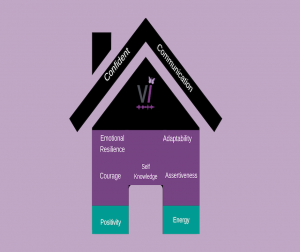If you use your voice for a living the odds are that you will have heard people speak about vocal projection: “You just need to project your voice” or “project your voice to the back wall” etc. This got me thinking. What does vocal “projection” actually mean and how do we do it?
Some common ideas
In my search for what people understand by vocal “projection” I discovered some misleading ideas, e.g. “expand your diaphragm” and don’t vocalise “from your larynx”. Whilst I understand what the writers may be getting at, both statements are flawed. I’ll explain below. First though, let’s look at what “projection” should not be.
What projection isn’t
The word “projection” comes from the latin projectio, meaning “to throw”. Herein lies a problem. If you think about throwing your voice out in order to reach a listener, the chances are that you will push, shout, squeeze or strain. None of this healthy or very effective and does not make for safe, projection. So, what about the “expand the diaphragm” or “use your diaphragm” idea?
The Diaphragm
Here it is below (highlighted orange). Notice the dome shape of this muscular organ. We use it all the time, or we would die! When it works the diaphragm contracts and flattens a bit. It cannot expand. The diaphragm is attached to the lungs and ribs via the pleural membranes. So, when the diaphragm contacts the lungs and ribs move with it. This creates more space (less pressure) in the lung and air is drawn in. The opposite happens when the diaphragm relaxes and we breathe out. In singing and speaking we can use the muscles of the abdominal wall and other body muscles to control to the speed of the diaphragm’s return (relaxation) and therefore the outflow of air.

What is projection then?
Well here’s the thing: Your vocal folds (cords) are in your larynx. This is where sound is made. To speak or sing, you have to use your larynx. The air you let out against the vocal folds (cords) has to make them vibrate. To do this efficiently, the vocal folds must resist that air flow just enough i.e. in a balanced way. This needs co-ordination between your breath and those vocal folds.
You can change the way the vocal folds interact with the breath by adding volume. This makes the muscle in the folds work harder and provide more resistance. Now, on a simple level, if you use too much vocal effort and inappropriate air flow, the sound will be louder, but pressed and strained. Too little and the sound will be airy and less vibrant. This is why it is useful to practise the skill and co-ordination needed to make a strong, clear sound i.e. “project”. You will also need to involve your body muscles to do this safely, especially at higher intensity e.g. calling out.
Resonance
This word is another that we hear a lot. What is it? How can it help projection? Well, this is a vital part of the recipe for projection of the voice. The vocal folds can only work so hard. Resonance is needed to help your sound carry further.
Resonance happens when the air spaces in your vocal tract (larynx, throat, mouth and nose) enhance the sound coming from the vocal folds. Since we have so many moveable structures in the vocal tract e.g. tongue, soft palate, the larynx itself, we can change its shape and therefore how it resonates. This means that with know-how and skill you can adapt that shape or “tune” your vocal tract to your voice, to adjust timbre and perceived loudness. You have an inbuilt “equaliser”!
Projection and YOU
This of course is a vital part of the equation. If you don’t have the intent, passion and belief to get your message out there, your projection is not complete. So many things that we do with our voices are triggered by how we feel and engage on a personal level. The brain is a clever thing. So, pay attention to gaining skill in all of the above, and then let your self run the show.
In conclusion
Healthy vocal fold vibration + Resonance + Body engagement + Self = effective projection of the voice.
I hope you’ve found this useful, I’d love to hear your thoughts. I’m live on Facebook most Saturdays with tips and discussions for professional voice users if you’d like to pop in.
You can also contact me for a free Vocal Strategy chat to explore any of these or other ideas further.




